Mermen are mythical creatures that have been a part of folklore and mythology for centuries. They are often depicted as having a human upper body and a fish-like lower body. Some legends describe them as hideous, while others portray them as handsome and alluring.
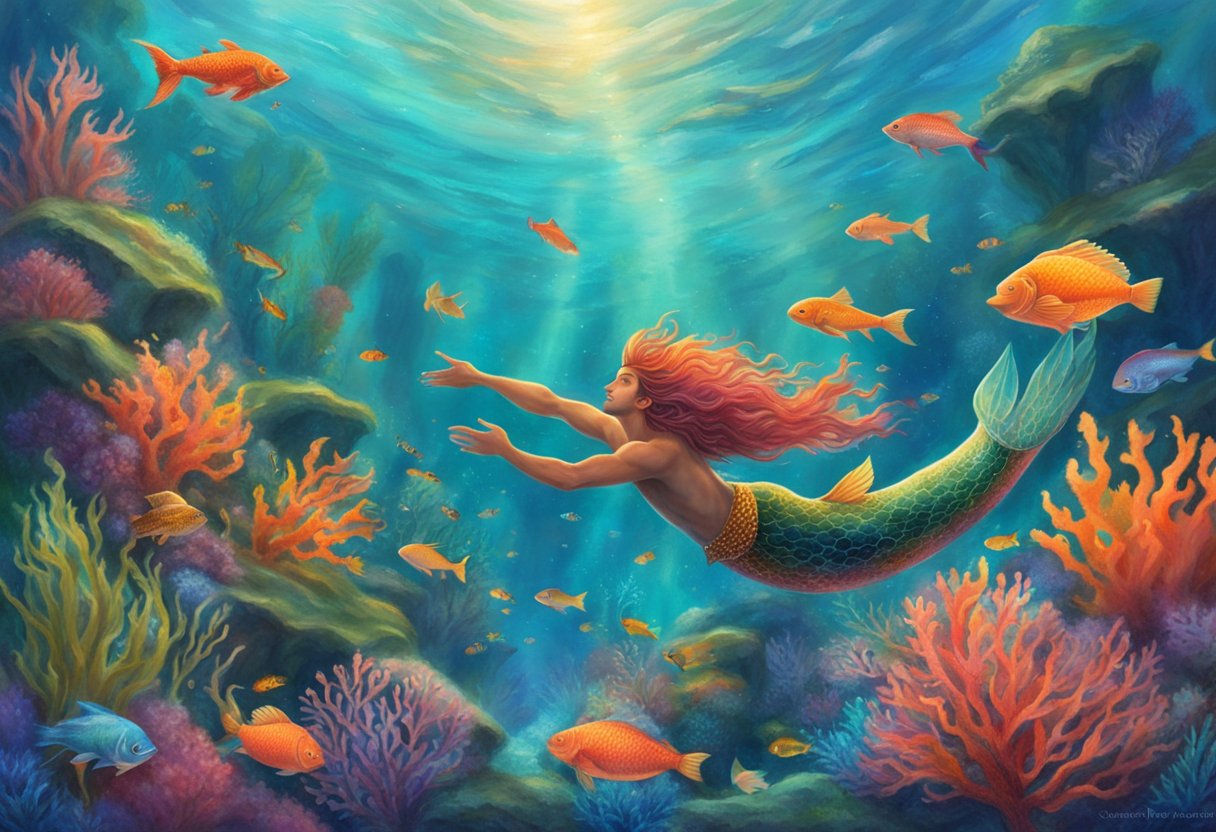
Mermen are the male counterparts of mermaids, who are also legendary creatures known for their beauty and enchanting voices. While mermaids are often associated with romantic tales and love stories, mermen are typically portrayed as fierce and powerful beings. They are said to possess great strength and are often depicted as protectors of the sea and its creatures.
Origins and Mythology
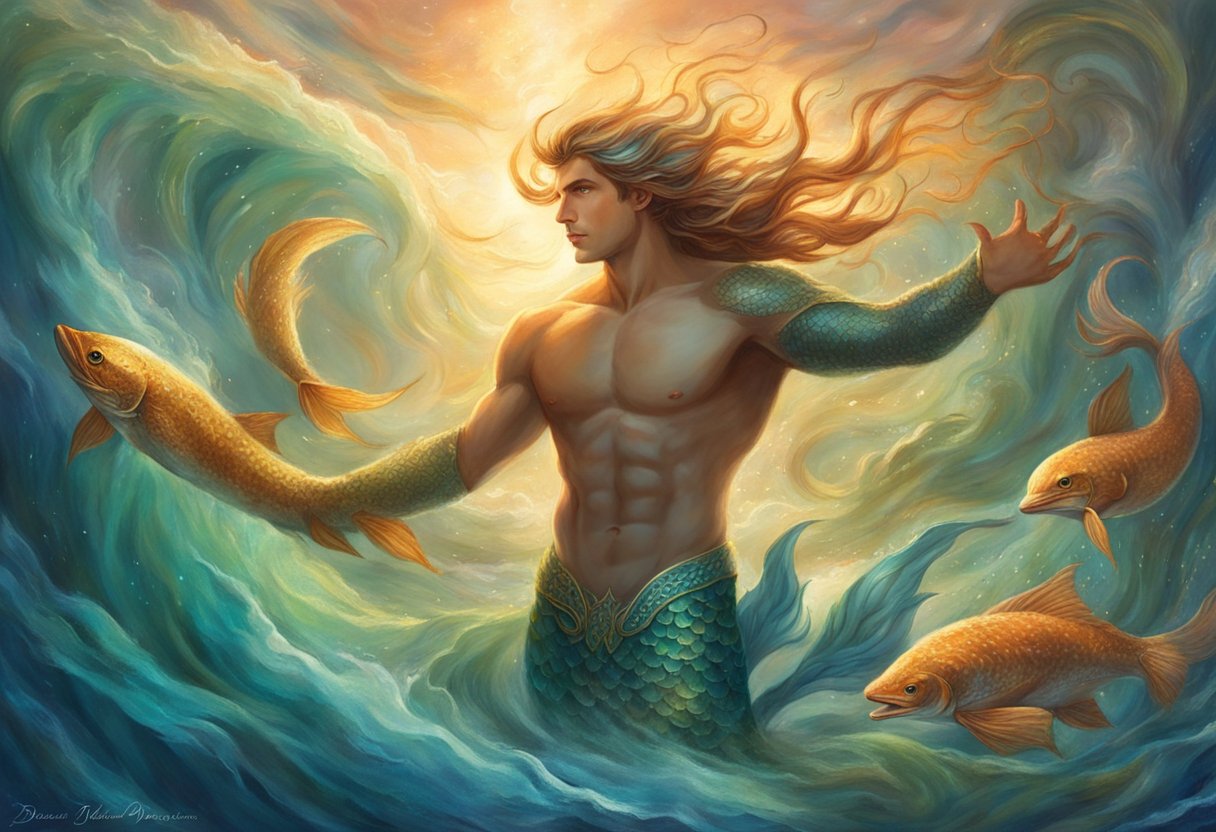
Historical Accounts
Mermen are legendary creatures that have been mentioned in various historical accounts throughout the world. The earliest known reference to a merman can be traced back to ancient Assyria, where a half-man, half-fish figure was depicted on a seal. In Greek mythology, Triton, the son of Poseidon, was a merman who was known for his ability to calm the waves with his conch shell. In medieval Europe, mermen were often depicted as fierce and dangerous creatures who would lure sailors to their deaths.
Cultural Significance
Mermen have played a significant role in various cultures around the world. In some cultures, they were believed to be protectors of the sea and were worshipped as deities. In other cultures, they were seen as evil creatures who would drown sailors and sink ships. Mermen have also been a popular subject in literature, art, and music. They have been depicted in numerous works of fiction, including Hans Christian Andersen’s “The Little Mermaid” and Jules Verne’s “Twenty Thousand Leagues Under the Sea.”
Regional Variations
The mythology surrounding mermen varies from region to region. In some cultures, mermen are depicted as handsome and alluring creatures who would seduce women. In others, they are described as hideous and terrifying creatures who would drag sailors to their deaths. In Japan, there is a legend of the ningyo, a mermaid-like creature with a monkey’s mouth and a fish’s body. In Africa, the mermaid Mami Wata is worshipped as a goddess of fertility and prosperity.
Overall, the mythology surrounding mermen is rich and diverse, with different cultures attributing different qualities and characteristics to these mythical creatures.
Physical Description
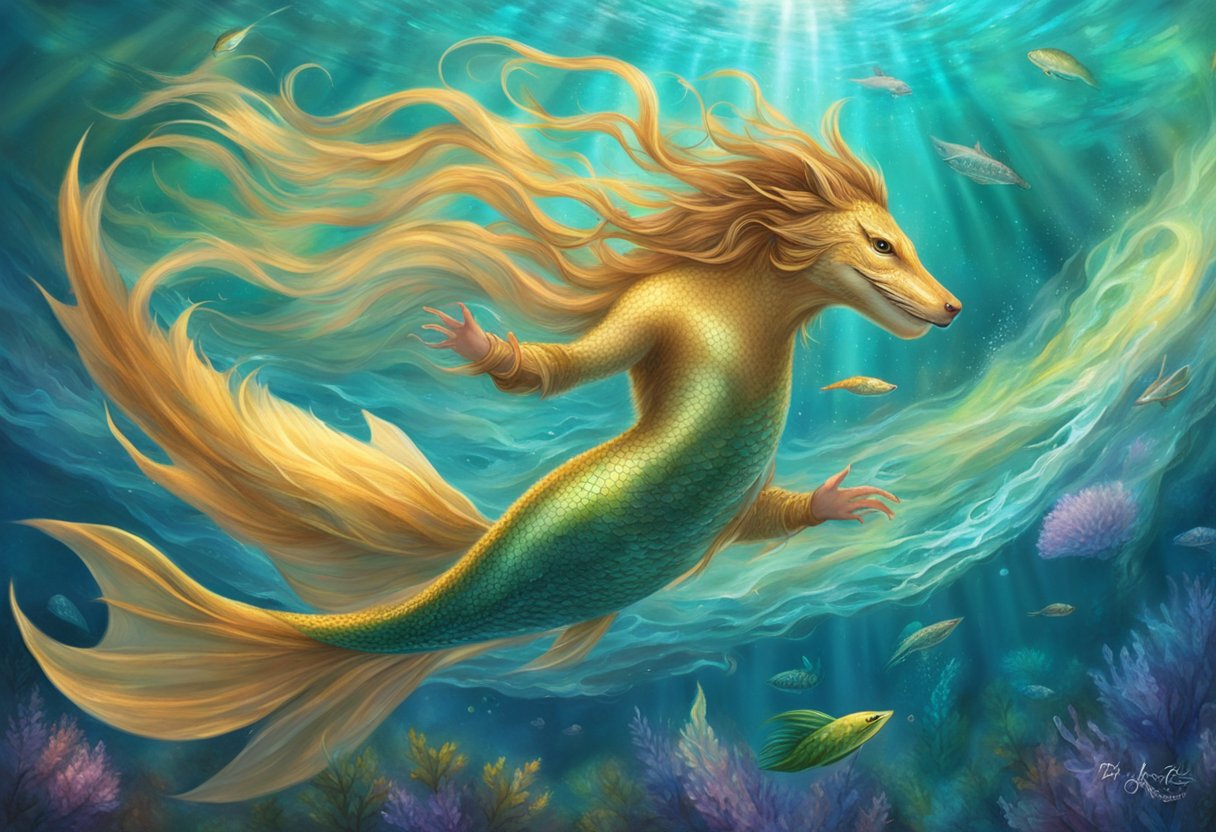
Human and Aquatic Features
A merman is a mythical creature that is half human and half fish. The upper half of the creature is human, while the lower half is that of a fish. The torso of the creature is muscular and toned, with broad shoulders and a defined chest. The arms are strong and well-developed, with webbed fingers that allow the creature to swim with ease.
The lower half of the merman is that of a fish, with scales covering the body and a long, powerful tail that propels the creature through the water. The tail is usually adorned with fins that allow the creature to maneuver through the water with ease. The skin of the merman is usually a shade of blue or green, with some variations across cultures.
Variations Across Cultures
The physical appearance of the merman varies across different cultures. In some cultures, the merman is depicted as a handsome and alluring creature, while in others, it is portrayed as hideous and terrifying. Some cultures depict the merman with a long beard and flowing hair, while others show it as bald and with a more fish-like face.
In some cultures, the merman is believed to have the ability to transform into a human form, while in others, it is always depicted with a fish tail. The merman is a popular figure in mythology and folklore around the world, with variations in physical appearance and abilities across different cultures.
Powers and Abilities
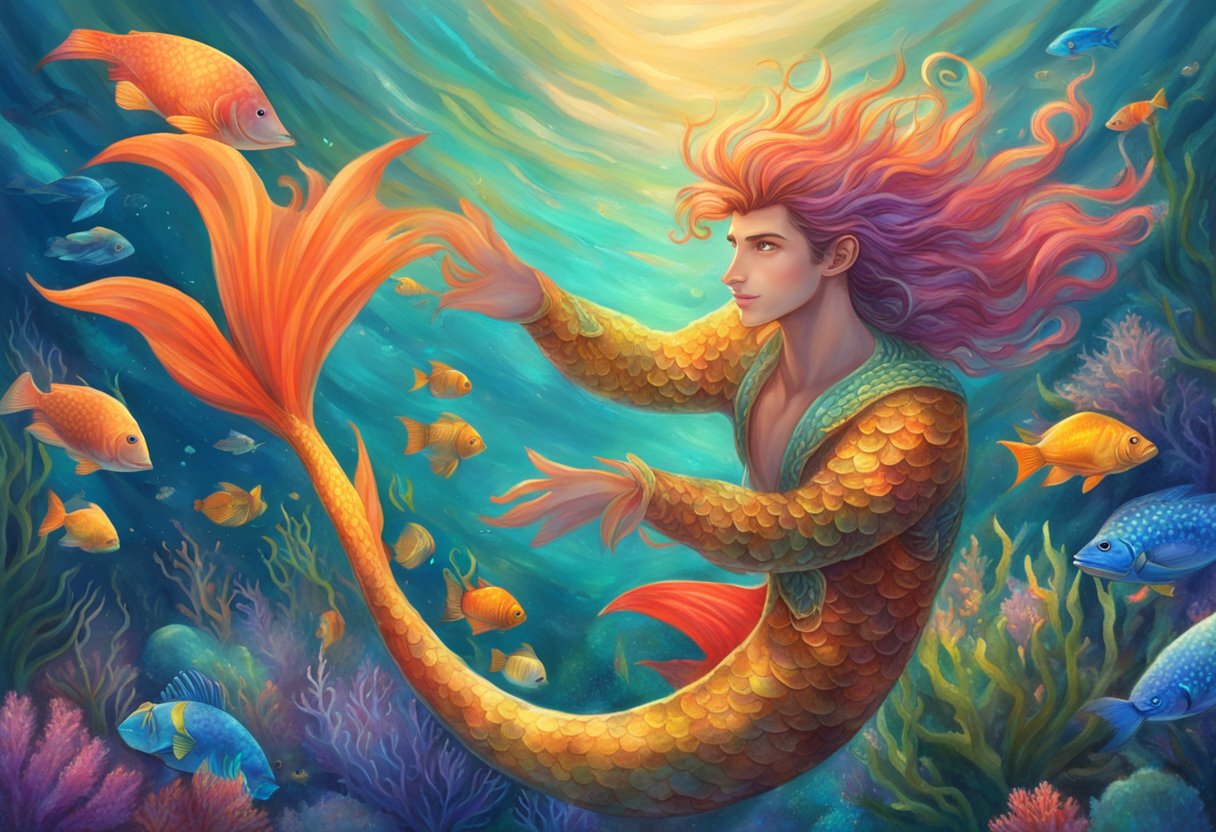
Aquatic Abilities
As a mythical aquatic creature, the Merman is known for its exceptional swimming abilities. With its powerful tail, it can swim at incredible speeds and navigate the depths of the ocean with ease. Its webbed hands and feet also allow it to move gracefully and quickly through the water. Some legends even suggest that the Merman has the ability to control the waves and weather, making it a powerful force to be reckoned with.
Interaction with Humans
The Merman is often depicted as a solitary creature, but it is said to have the ability to communicate with humans. In some stories, it is believed that the Merman can speak the human language and even form relationships with humans. It is said that the Merman possesses the power to grant wishes and make prophecies, making it a revered figure in many cultures.
Despite its mystical powers, the Merman is also known for its mischievous nature. It is said to be fond of luring sailors to their doom with its enchanting singing voice. However, some legends suggest that the Merman can also be benevolent, helping sailors in times of need.
Overall, the Merman is a fascinating creature with a range of powers and abilities that have captured the imagination of people for centuries.
Representations in Media
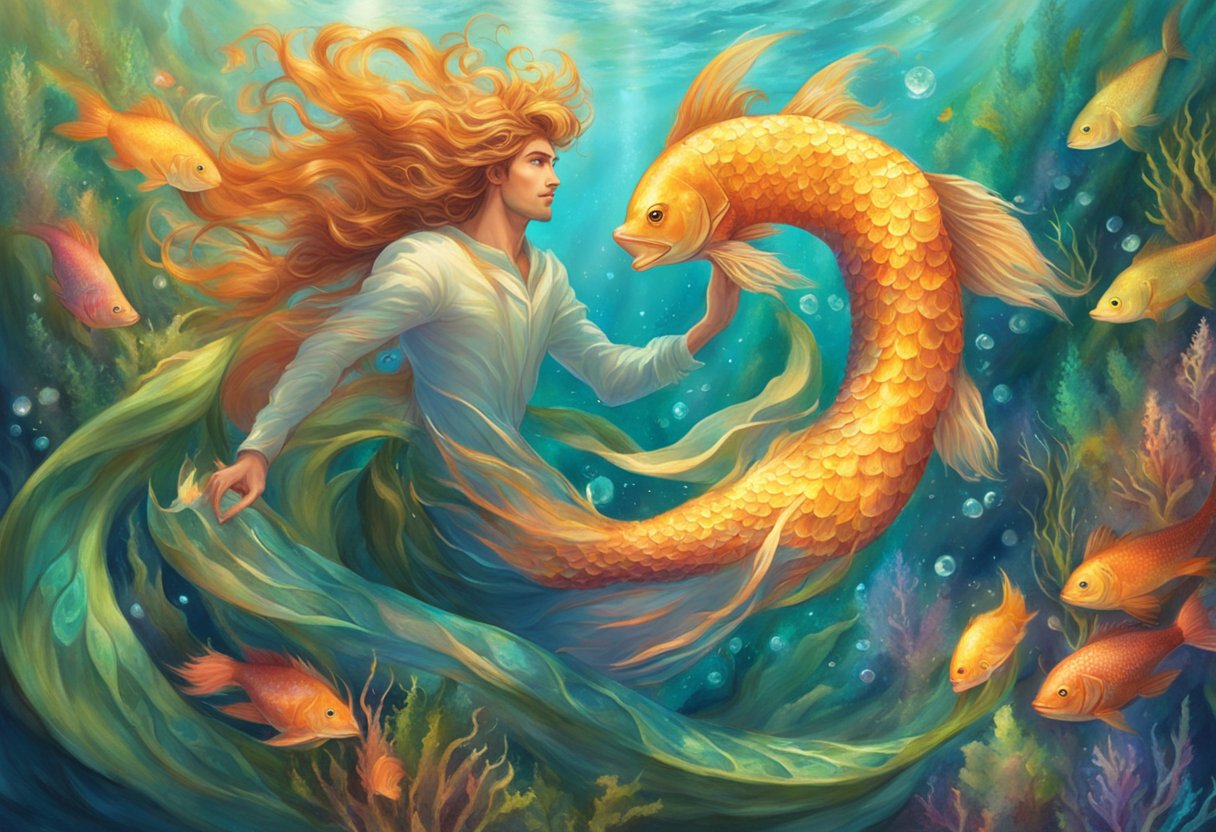
Literature
Mermen have been featured in various literary works throughout history. In Greek mythology, Triton, the son of Poseidon, is often depicted as a merman. In Hans Christian Andersen’s fairy tale “The Little Mermaid,” the protagonist falls in love with a human prince and sacrifices her voice to become human. Mermen also appear in modern literature, such as the “Percy Jackson and the Olympians” series by Rick Riordan.
Film and Television
Mermen have been portrayed in various films and television shows. In the 1984 film “Splash,” the male lead is a merman who falls in love with a human woman. In the television series “H2O: Just Add Water,” one of the main characters becomes a merman after being exposed to a magical pool. Mermen have also appeared in animated films, such as Disney’s “The Little Mermaid” and “Ponyo.”
Art and Music
Mermen have been a popular subject in art throughout history. In Renaissance art, mermen were often depicted alongside mermaids in sea-themed paintings. In contemporary art, mermen have been featured in various forms, such as sculptures and paintings. Mermen have also been referenced in music, such as the song “Merman” by Tori Amos, which describes a woman’s desire to become a merman.
In conclusion, mermen have been a popular subject in various forms of media throughout history, from literature to film, television, art, and music. Their depictions have varied from handsome and heroic to monstrous and terrifying.
Beliefs and Legends
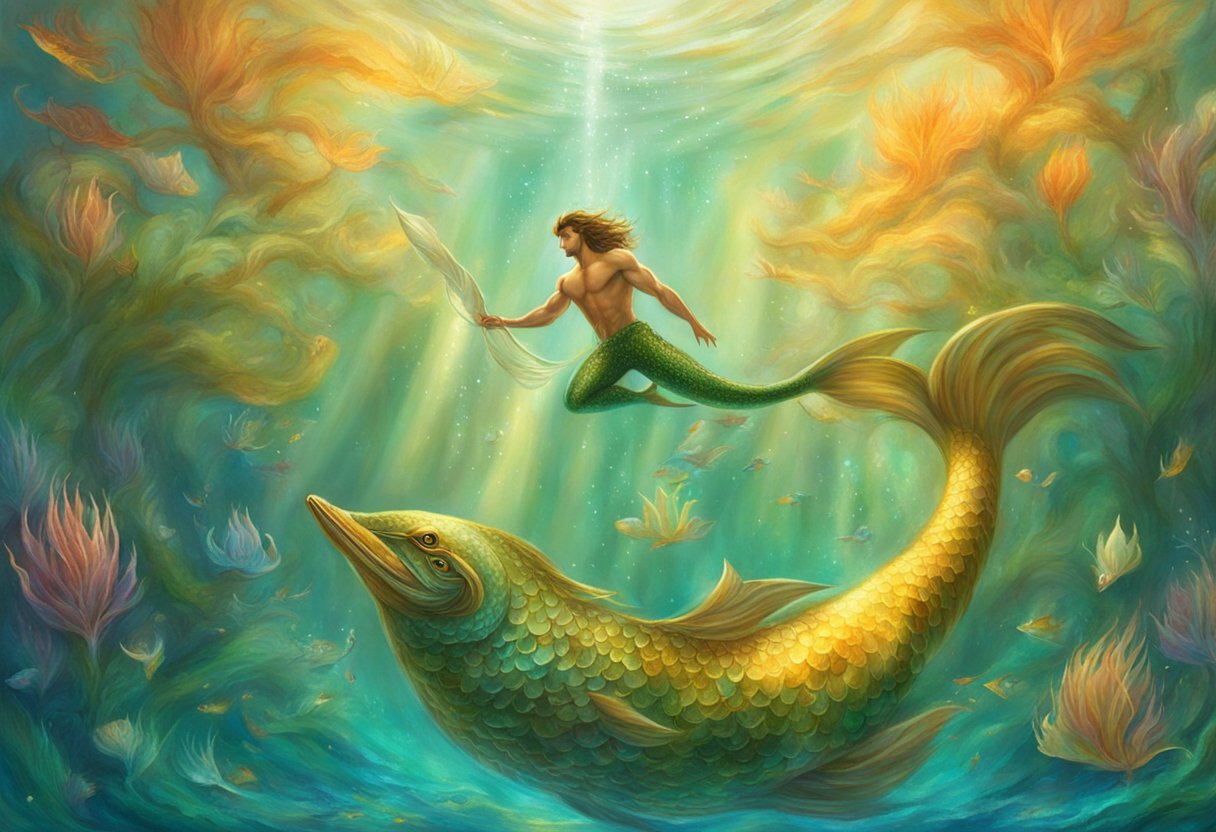
Protection and Omens
In many cultures, mermen are believed to be protectors of the sea and its creatures. They are often seen as benevolent beings who help sailors during their voyages. Some sailors even believe that sighting a merman is a good omen, signaling a safe journey ahead. In some cultures, mermen are also believed to have healing powers and are associated with fertility and abundance.
Transformation Myths
In some myths, mermen are said to have the ability to transform into humans. These transformation myths often involve a merman falling in love with a human woman and making a deal with a sea witch or other magical creature to become human in order to be with her. These myths often end tragically, with the merman either losing his ability to return to the sea or dying as a result of his transformation.
Overall, mermen have been a part of mythology and folklore for centuries, and their stories continue to fascinate and intrigue people today.
Modern Interpretations
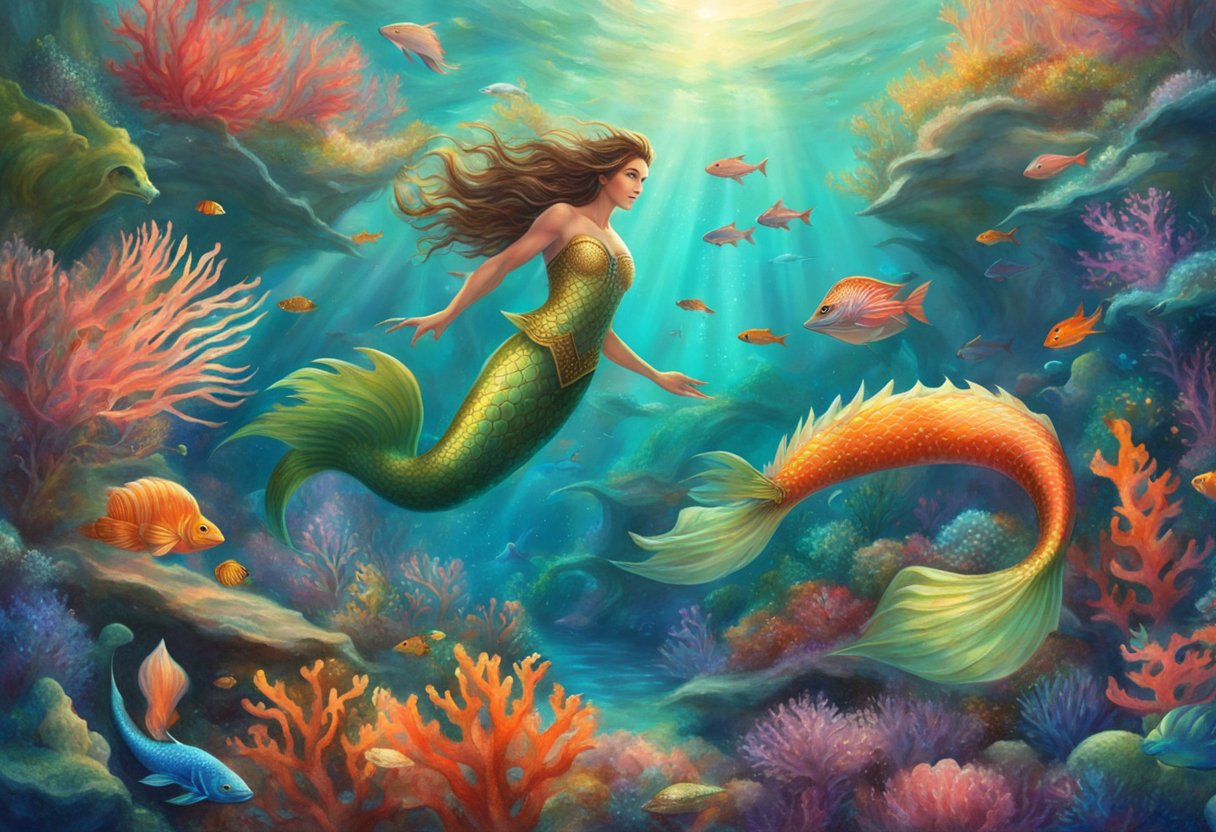
In Popular Culture
Mermen have been a popular subject in modern popular culture, appearing in movies, TV shows, and literature. In Disney’s “The Little Mermaid,” the character King Triton is depicted as a merman with a muscular physique and a powerful presence. Similarly, the television series “H2O: Just Add Water” features a group of teenage girls who transform into mermaids and mermen when they come into contact with water.
In addition to their appearance in mainstream media, mermen have also become a popular subject in art. Many contemporary artists have created their own interpretations of mermen, often portraying them as powerful and alluring figures.
Mermaid Comparisons
While mermen and mermaids share many similarities, there are some key differences between the two. Mermen are often depicted as being more muscular and powerful than mermaids, with a greater emphasis on their physical strength. In contrast, mermaids are often portrayed as more delicate and graceful, with a greater emphasis on their beauty and allure.
One key difference between the two is their role in mythology. While mermaids are often associated with seduction and luring sailors to their deaths, mermen are typically seen as protectors of the sea and its inhabitants. This difference in role is reflected in their physical appearance, with mermen often being depicted as more fearsome and intimidating than their female counterparts.
Overall, modern interpretations of mermen have helped to keep the mythical creatures alive in popular culture. Whether portrayed as powerful protectors of the sea or alluring figures of fantasy, mermen continue to capture the imagination of people around the world.

